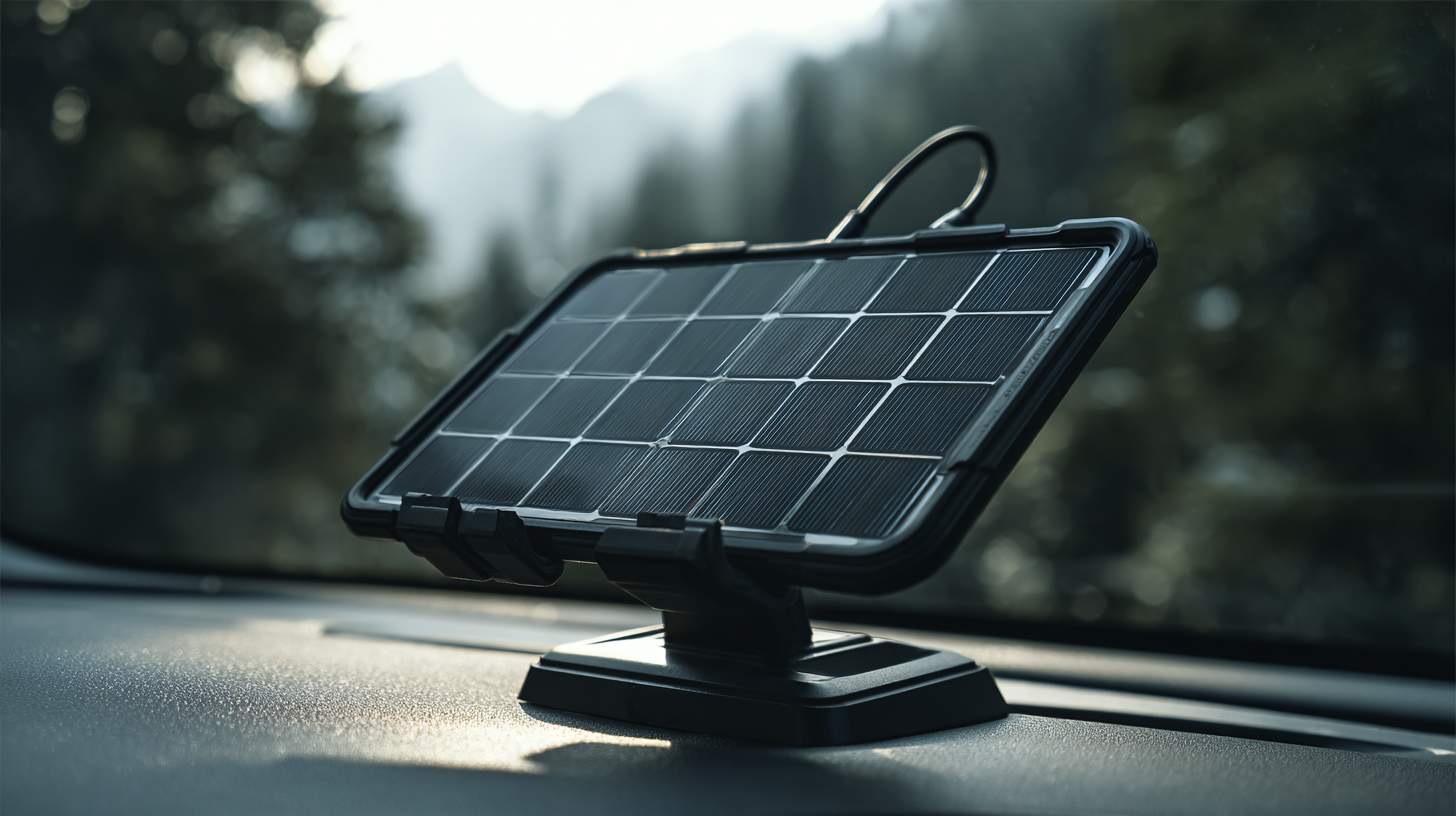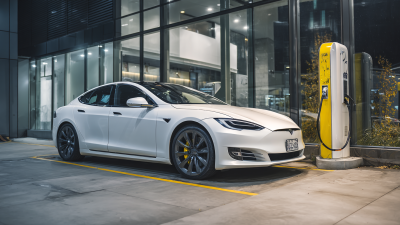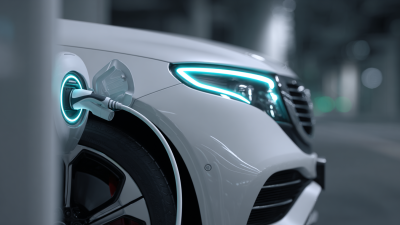With the growing adoption of electric vehicles (EVs) and the increasing need for sustainable energy solutions, harnessing solar energy for car charging has become an innovative focus within the automotive and renewable energy industries. The global electric vehicle market is projected to reach 26.4 million units sold by 2025, underscoring the urgent demand for efficient charging systems. As highlighted in a report by the International Energy Agency, solar energy adoption in transportation can reduce greenhouse gas emissions by up to 70%, making it essential for aligning with global climate goals.
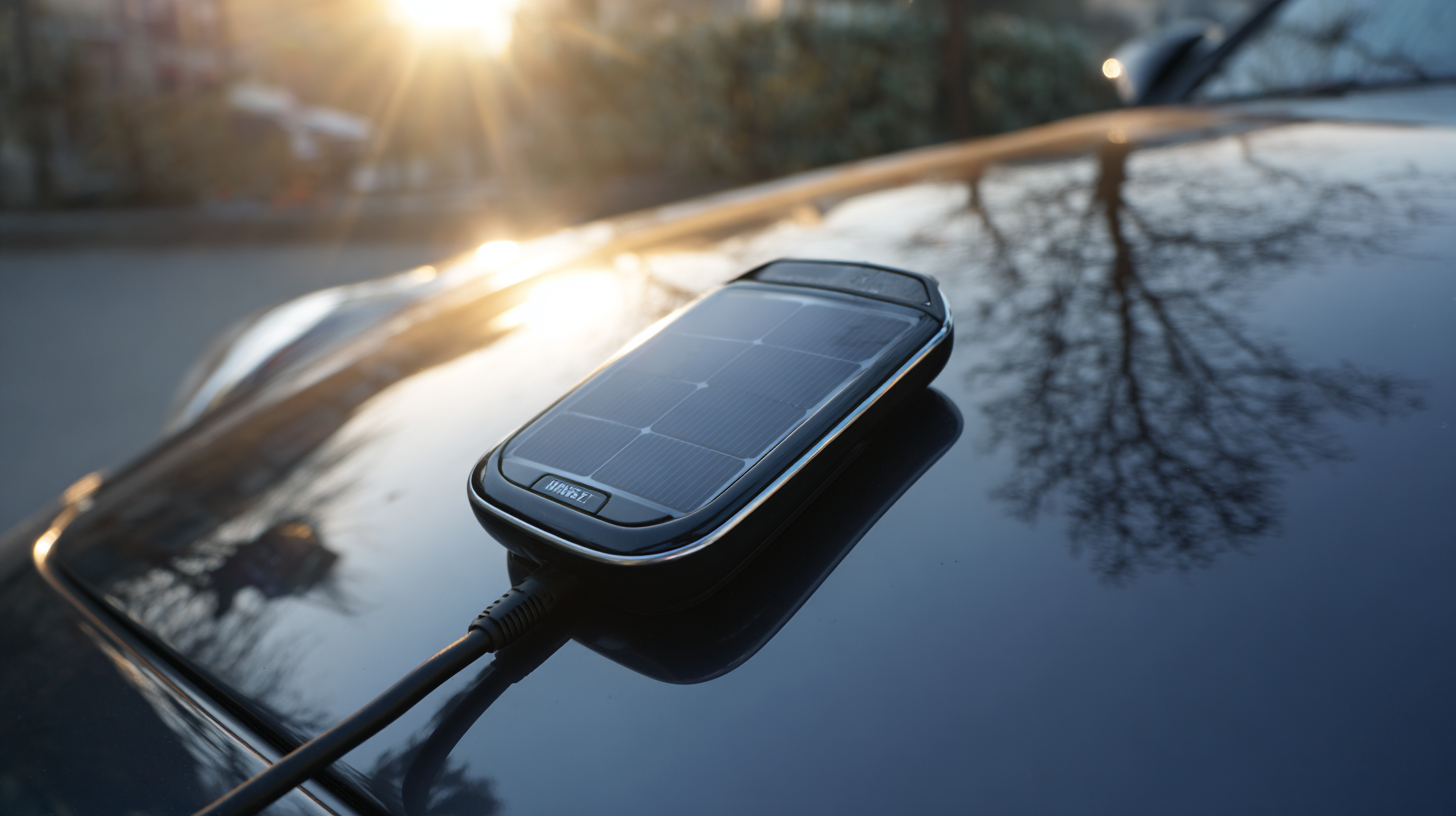 Solar Car Chargers, which utilize photovoltaic panels to convert sunlight into electricity, provide a sustainable and cost-effective solution for powering EVs, offering significant advantages such as reduced charging costs and increased energy independence. By integrating solar charging solutions, consumers not only benefit from lower utility bills but also contribute to a greener and more sustainable transportation ecosystem.
Solar Car Chargers, which utilize photovoltaic panels to convert sunlight into electricity, provide a sustainable and cost-effective solution for powering EVs, offering significant advantages such as reduced charging costs and increased energy independence. By integrating solar charging solutions, consumers not only benefit from lower utility bills but also contribute to a greener and more sustainable transportation ecosystem.
Harnessing solar energy for car charging is an innovative way to create sustainable transportation solutions. Understanding the basics of solar energy is crucial for effectively implementing solar-powered charging systems. Solar energy is derived from sunlight, which can be converted into electricity using photovoltaic (PV) panels. These panels capture sunlight and transform it into usable power for charging electric vehicles, reducing dependence on fossil fuels and lowering carbon emissions.
**Tips:** When considering solar energy for car charging, invest in high-efficiency solar panels to maximize energy capture. Calculate your average driving range and the corresponding energy needs to determine the size and number of panels required. It's also essential to explore solar inverters, which convert direct current (DC) from your solar panels into alternating current (AC) that is used by most electric vehicles.
Another key aspect is the installation of a reliable battery storage system. This allows you to store excess solar energy generated during the day for use at night or on cloudy days, ensuring that you have consistent charging capabilities. **Tips:** Opt for a battery with a long life span and consider an energy management system to monitor your solar power generation and usage effectively. By integrating solar energy into your car charging solutions, you contribute to a greener future while enjoying the convenience of renewable energy.
| Dimension | Detail |
|---|---|
| Solar Panel Efficiency | 15% - 22% |
| Typical Solar Charger Output | 300W to 600W |
| Charging Time for EV (Full Charge) | 4 to 8 hours (depending on sunlight and battery capacity) |
| Average Cost of Solar Setup | $5,000 - $15,000 |
| Return on Investment Period | 5 to 10 years |
| Environmental Impact Reduction | Up to 80% reduction in carbon emissions |
| Battery Storage Options | Lithium-ion, Lead-acid, Flow batteries |
When considering solar energy for car charging solutions, selecting the right solar panels is crucial for maximizing efficiency. The performance of solar panels can vary significantly based on their type, efficiency rating, and wattage. Monocrystalline panels, known for their high efficiency and durability, are often a preferred choice for car charging applications, especially for those looking to optimize space and energy output. Their sleek design and better performance in low-light conditions make them ideal for home or commercial installations where real estate may be limited.
In addition to panel type, it's important to evaluate the energy needs of the electric vehicle being charged. Understanding the charging requirements will inform the selection of solar panels that can deliver adequate power within a reasonable timeframe. Pairing the solar panels with a reliable inverter ensures that the energy harnessed can be effectively converted for vehicle charging. By choosing panels that are well-matched to the vehicle's specifications, users can ensure a seamless and efficient charging experience while taking full advantage of the renewable energy potential offered by solar power.
This chart shows the average energy output of various solar panel types measured in watts per square meter (W/m²) to help choose the right solar panels for efficient car charging.
The integration of solar chargers with electric vehicles (EVs) has emerged as a key innovation to enhance sustainable transportation. According to the International Energy Agency (IEA), the global stock of electric vehicles surpassed 10 million in 2020, and as the demand for EVs continues to grow, so does the necessity for efficient charging solutions. By pairing solar charging technology with electric vehicles, users can significantly reduce their carbon footprint and reliance on grid electricity, particularly as solar panel prices have dropped by nearly 82% since 2010, making solar installation more accessible.
Furthermore, research from the National Renewable Energy Laboratory (NREL) indicates that a typical electric vehicle can harness enough solar energy in a day to power it for approximately 30 to 50 miles. This integration not only promotes green energy consumption but also provides a cost-effective alternative for EV owners. By utilizing solar-powered charging stations at homes or public locations, drivers can utilize renewable energy to charge their vehicles, maximizing efficiency and promoting a sustainable future for transportation. As cities and states increasingly adopt policies to support renewable energy, the synergy between solar charging and electric vehicles will likely become a cornerstone of clean mobility initiatives.
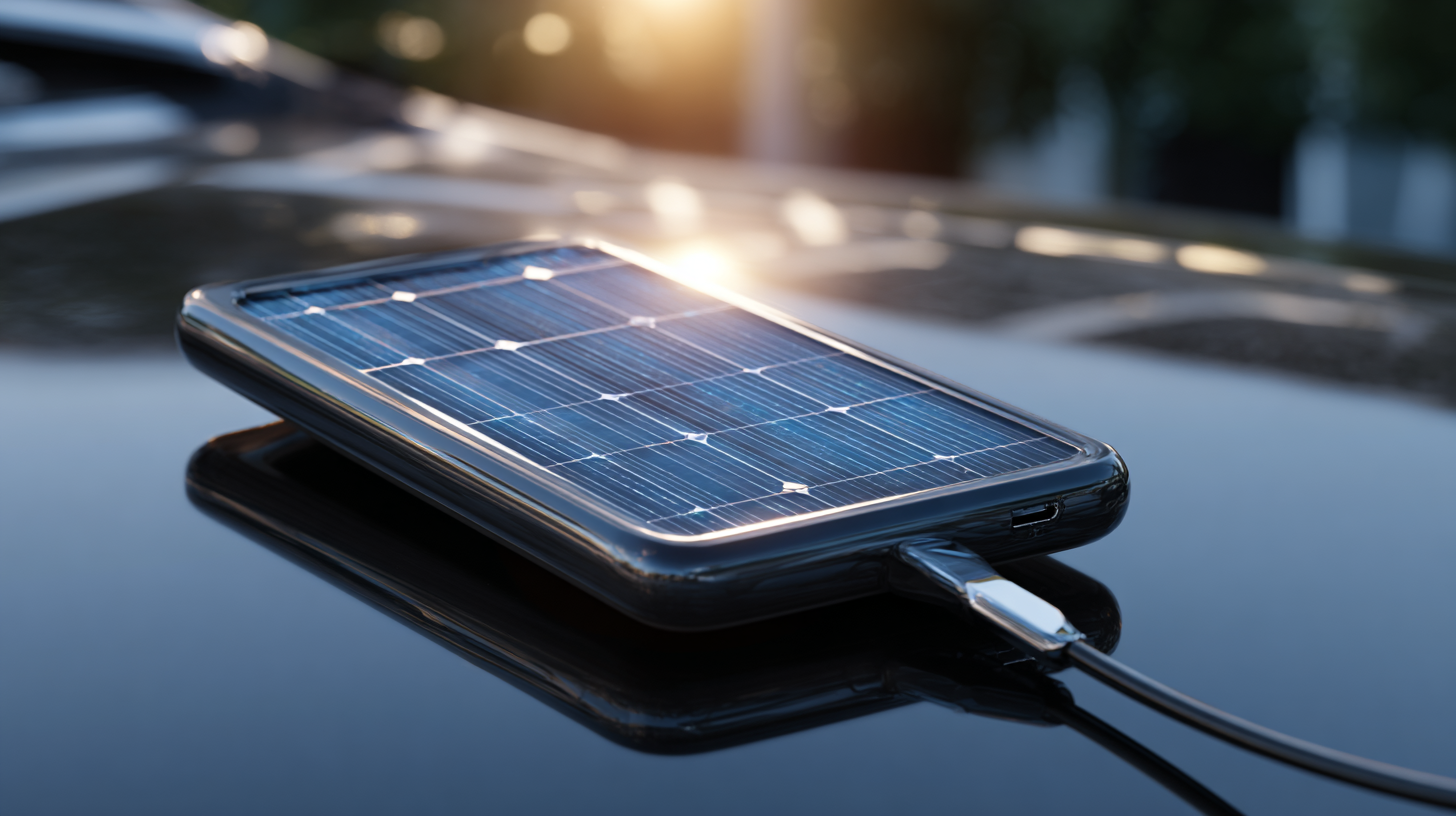
The integration of solar technology into car charging solutions is revolutionizing the way electric vehicles (EVs) are powered. With advancements showcased at events like Intersolar Europe 2023, there is a significant push towards optimizing charging times through innovative solar applications. Research indicates that solar energy can reduce charging time by up to 30%, enabling drivers to harness sustainable power more effectively. This transformation not only boosts efficiency but also enhances the overall user experience, ultimately promoting wider adoption of electric vehicles.
In addition to solar car chargers, companies are unveiling cutting-edge technologies such as solar-powered bike computers equipped with advanced charging systems. These innovations, combined with solar-assisted devices, have the potential to create a seamless ecosystem where renewable energy fuels daily transportation. Data from industry reports suggests that as the solar market continues to grow, the potential for improving charging infrastructure will considerably increase, paving the way for enhanced mobility solutions powered by clean energy. The synergy between solar technology and electric vehicles marks a promising trend in the automotive industry, pointing toward a more sustainable future.
Maintaining solar car charging systems is crucial for ensuring their longevity and efficiency. According to the International Energy Agency, the adoption of solar energy for electric vehicle (EV) charging has surged by over 30% in the last five years, highlighting its growing importance in sustainable transportation. Regular maintenance practices can significantly enhance the performance of solar panels, helping to maintain optimal energy output. This includes routine cleaning to remove dust and debris, which can reduce efficiency by up to 20%, as noted in a report by the National Renewable Energy Laboratory.
In addition to cleaning, it is essential to conduct periodic inspections of the system. This should cover the solar panels, battery storage, and the inverter. The U.S. Department of Energy indicates that ensuring connections are secure and components are functioning properly can extend the system's lifespan, often exceeding 25 years when properly maintained. Furthermore, monitoring energy production and consumption can provide valuable data to identify issues early on, preventing costly repairs and downtime. Investing time in maintenance not only promotes efficiency but also fosters confidence in solar charging solutions as a reliable option for electric vehicles.
